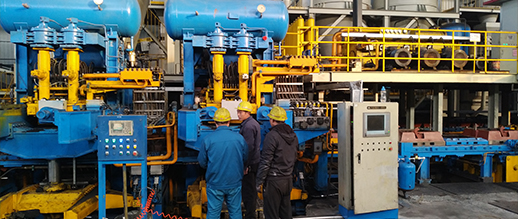
-
 Afrikaans
Afrikaans -
 Albanian
Albanian -
 Amharic
Amharic -
 Arabic
Arabic -
 Armenian
Armenian -
 Azerbaijani
Azerbaijani -
 Basque
Basque -
 Belarusian
Belarusian -
 Bengali
Bengali -
 Bosnian
Bosnian -
 Bulgarian
Bulgarian -
 Catalan
Catalan -
 Cebuano
Cebuano -
 Corsican
Corsican -
 Croatian
Croatian -
 Czech
Czech -
 Danish
Danish -
 Dutch
Dutch -
 English
English -
 Esperanto
Esperanto -
 Estonian
Estonian -
 Finnish
Finnish -
 French
French -
 Frisian
Frisian -
 Galician
Galician -
 Georgian
Georgian -
 German
German -
 Greek
Greek -
 Gujarati
Gujarati -
 Haitian Creole
Haitian Creole -
 hausa
hausa -
 hawaiian
hawaiian -
 Hebrew
Hebrew -
 Hindi
Hindi -
 Miao
Miao -
 Hungarian
Hungarian -
 Icelandic
Icelandic -
 igbo
igbo -
 Indonesian
Indonesian -
 irish
irish -
 Italian
Italian -
 Japanese
Japanese -
 Javanese
Javanese -
 Kannada
Kannada -
 kazakh
kazakh -
 Khmer
Khmer -
 Rwandese
Rwandese -
 Korean
Korean -
 Kurdish
Kurdish -
 Kyrgyz
Kyrgyz -
 Lao
Lao -
 Latin
Latin -
 Latvian
Latvian -
 Lithuanian
Lithuanian -
 Luxembourgish
Luxembourgish -
 Macedonian
Macedonian -
 Malgashi
Malgashi -
 Malay
Malay -
 Malayalam
Malayalam -
 Maltese
Maltese -
 Maori
Maori -
 Marathi
Marathi -
 Mongolian
Mongolian -
 Myanmar
Myanmar -
 Nepali
Nepali -
 Norwegian
Norwegian -
 Norwegian
Norwegian -
 Occitan
Occitan -
 Pashto
Pashto -
 Persian
Persian -
 Polish
Polish -
 Portuguese
Portuguese -
 Punjabi
Punjabi -
 Romanian
Romanian -
 Russian
Russian -
 Samoan
Samoan -
 Scottish Gaelic
Scottish Gaelic -
 Serbian
Serbian -
 Sesotho
Sesotho -
 Shona
Shona -
 Sindhi
Sindhi -
 Sinhala
Sinhala -
 Slovak
Slovak -
 Slovenian
Slovenian -
 Somali
Somali -
 Spanish
Spanish -
 Sundanese
Sundanese -
 Swahili
Swahili -
 Swedish
Swedish -
 Tagalog
Tagalog -
 Tajik
Tajik -
 Tamil
Tamil -
 Tatar
Tatar -
 Telugu
Telugu -
 Thai
Thai -
 Turkish
Turkish -
 Turkmen
Turkmen -
 Ukrainian
Ukrainian -
 Urdu
Urdu -
 Uighur
Uighur -
 Uzbek
Uzbek -
 Vietnamese
Vietnamese -
 Welsh
Welsh -
 Bantu
Bantu -
 Yiddish
Yiddish -
 Yoruba
Yoruba -
 Zulu
Zulu
Understanding the Functionality and Importance of Industrial Drum Brakes in Heavy Machinery Operations
Understanding Industrial Drum Brakes Efficiency and Safety in Heavy-Duty Applications
Industrial drum brakes play a pivotal role in various heavy-duty applications, providing essential safety and control in machinery and vehicles. These brakes are commonly utilized in industries ranging from manufacturing to transportation, where the requirement for reliable stopping power is paramount. This article aims to explore the components, functionality, advantages, and applications of industrial drum brakes.
Components of Industrial Drum Brakes
At their core, industrial drum brakes consist of several key components the drum itself, brake shoes, a hydraulic or pneumatic actuator, and various linkages. The drum, usually made from strong materials like cast iron or composite metals, rotates with the wheel or drive mechanism. The brake shoes, situated inside the drum, are lined with friction materials that provide the actual stopping force when engaged.
The engagement of the brake shoes is typically controlled by an actuator, which can operate through hydraulic or pneumatic means. When the operator initiates braking, the actuator pushes the shoes outward against the inner surface of the drum, creating friction that slows down or stops the motion of the equipment.
Functionality of Drum Brakes
The working principle of drum brakes revolves around friction. When the brakes are applied, the shoes press against the drum, generating resistance and converting kinetic energy into thermal energy. This process effectively reduces the speed of the moving machinery or vehicle. The design of the drum brake allows for consistent braking power and is less prone to fading under heavy use, making it suitable for industrial environments where safety and reliability are critical.
One of the additional features of industrial drum brakes is their ability to self-energize. This means that as the drum rotates, it can help push the brake shoes against the drum more forcefully, increasing the braking efficiency without requiring excessive force from the operator.
Advantages of Industrial Drum Brakes
industrial drum brakes

Industrial drum brakes offer several significant advantages over other braking systems, such as disc brakes. Primarily, they are known for their durability and longevity. The enclosed design of the drum helps protect the braking mechanism from debris and harsh environmental conditions, leading to less wear and tear.
Moreover, drum brakes typically provide a larger surface area for friction, allowing for effective reduction of speed. This characteristic is especially beneficial in heavy-duty applications, where loads can be substantial. Drum brakes also tend to be more cost-effective, both regarding initial installation and maintenance.
Applications of Industrial Drum Brakes
The applications of industrial drum brakes are diverse and extensive. They are widely used in various sectors including, but not limited to
1. Manufacturing Equipment Drum brakes are commonly installed in factory machinery such as conveyor systems and lifting equipment where precise control is necessary to prevent accidents.
2. Construction Vehicles Heavy machinery like cranes, excavators, and forklifts rely on drum brakes for their ability to manage high loads efficiently.
3. Rail Transportation Many trains utilize drum brakes for their reliability in stopping large, heavy passenger and freight cars safely.
4. Agricultural Equipment Tractors and other farming machinery benefit from drum brakes, particularly when operating in challenging outdoor conditions.
In conclusion, industrial drum brakes are a crucial component in maintaining safety and efficiency across various industries. Their design offers durability, effective stopping power, and adaptability to tough environments, ensuring that operators can rely on them to perform consistently under demanding conditions. As industries continue to evolve, the integration of advanced materials and technologies into drum brake systems will likely enhance their performance and effectiveness in the years to come.
-
What Are Drum BrakesNewsJul.07,2025
-
Understanding Brake Drum MaterialNewsJul.07,2025
-
Semi-Trailer Brake Drum: A Key Component for Extreme Loads and Long-Distance TransportNewsJul.07,2025
-
Drum Brake Pads for SaleNewsJul.07,2025
-
Brake Drums for SaleNewsJul.07,2025
-
Brake Drum ManufacturerNewsJul.07,2025
-
Aluminum Brake Drums: The Future of High-Performance CarsNewsJul.07,2025
